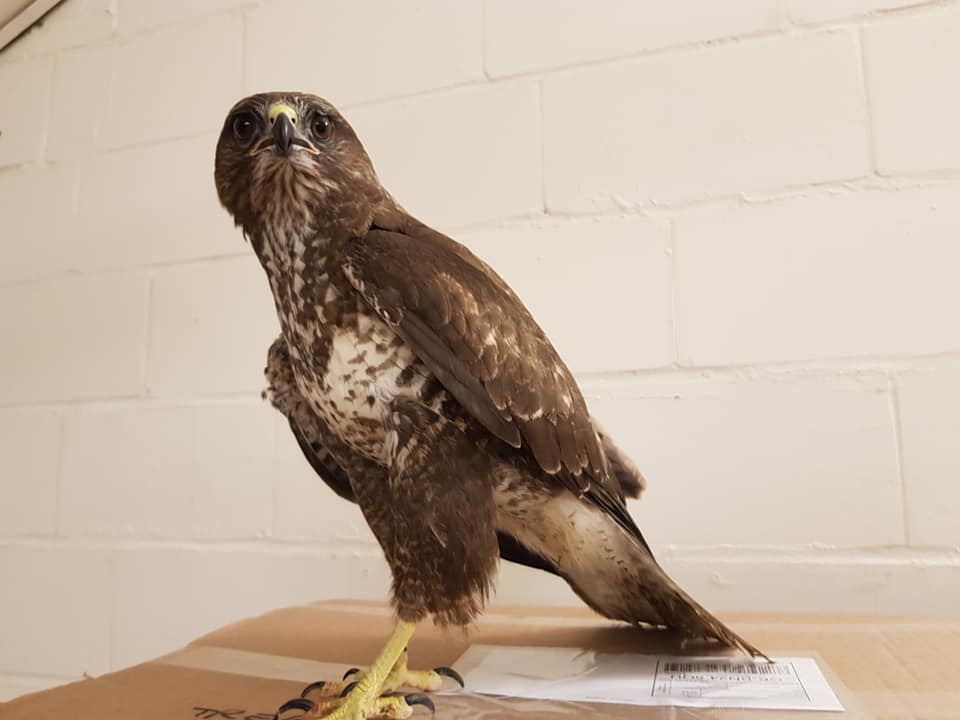
Birds of prey vary in size, ranging from the small Merlin to larger species like Buzzards and Kites, with owls also included in the mix. These birds all possess hooked beaks and talons, so if you need to handle one in a precarious situation, cover it with a thick towel and secure it by pinning the wings to its body. Afterwards, place the covered bird in a container of appropriate size while ensuring it remains wrapped up and its head covered. It’s advisable to avoid wire mesh containers as they can harm the bird’s feathers.
Refrain from feeding or providing liquids to sick or injured birds of prey, as it may impede the safe administration of sedation or general anesthesia.
Remember to wash your hands, especially after handling meat-eating birds, as they pose a higher infection risk compared to seed-eating birds.
If you come across a bird with visible injuries, it is best to seek help from a rescue organization for assistance and guidance.
Many calls regarding “orphaned” birds of prey are actually fledglings, in the midst of testing their wings, often spotted out on tree branches. Young birds venture away from their nests before they can fly, reducing nest overcrowding and minimizing threats from predators as they mature. While some may stumble and fall during these explorations, their parents typically locate and feed them. Certain birds, like Tawny Owls, exhibit impressive climbing skills even at a young age. If you come across a young bird at the base of a tree it may be able to climb back up and is not necessarily in trouble. If you find a bird in a concerning location, especially on a busy dog walking path or edge of a busy road, it’s advisable to contact a rescue for guidance. Avoid trying to return young birds to their nests, this can result in the entire nest being abandoned or the parents attacking you.
Please refrain from intentionally disrupting a bird of prey that is in the midst of catching, killing, or consuming another animal. These birds require food, and chasing them away may lead to unnecessary suffering. While it may not be appealing, smaller birds are a vital part of the food chain, and every creature must feed to survive. We cannot expect birds of prey to be vegan. There is no proof that birds of prey have a detrimental long-term effect on other wild bird populations.
If you come across a bird on the ground with spread wings and an upright head, it might be shielding food it has caught and is consuming, or encouraging ants to remove mites from their bodies. Avoid disturbing the bird. Observe from a distance for 15 minutes to understand the situation. If you remain uncertain, seek guidance from a rescue service.

